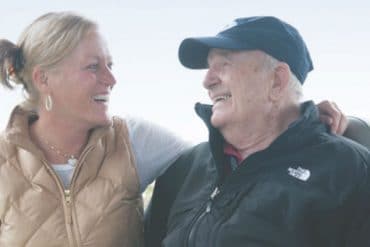WRITTEN BY PETER B. BRACE
PHOTOGRAPHY BY NATHAN COE

In its sixth season, the Nantucket Farmers & Artisans Market at the intersection of Cambridge and North Union streets is the reason local growers, jewelry makers, weavers, beekeepers, soap makers and other artisans are thriving on Nantucket. Bringing their organic, locally grown produce and handmade crafts to this downtown location every Saturday from June 15th to October 15th is invaluable hands-on marketing for their year- round businesses.
The market has served as a springboard for local artisans such as Liliana Dougan whose “Nantucket Pasta Goddess” gluten-free pasta is now in 43 stores in six states, and craftspeople such as Jeanne Van Etten and weaver Karen Sheppard, who are earning a living from their creations. Lower profile island growers, including Nantucket Mushrooms, Hummock Pond Farm and Pumpkin Pond Farm, are gaining notoriety through the market, helping them compete with the island’s two largest farms, Bartlett’s and Moors End.
“In terms of success as a program, I don’t think that can be overstated because it’s doing exactly what we wanted it to do,” says Michelle Whelan, executive director of Sustainable Nantucket, which sponsors the market. “It’s giving our new, beginner growers a platform to get connected to the community to raise their profile, it’s giving our established growers an additional place where they can be seen and remind people of their presence and where their farm stands are, and it’s given our artisans the chance to be entrepreneurs and be a part of our cottage industry.”
Germination of this market happened inside of former Nantucketer Heather Leisher-Coffin and island grower Wendy Fereshetian in 2005. It sprouted from their thoughts on local sustainable practices and how at the time there was no place to buy local organic produce on a regular basis. This pair saw the market as a venue where smaller farmers, home gardeners, craftspeople, bee keepers, and poultry and livestock farmers could gather for a weekly confab of shoptalk and to share their products with the community.
In helping this pair with their farmers market idea, Sustainable Nantucket saw an opportunity to expand its Buy Local program by introducing Nantucketers to organic produce and island-made crafts as well as to the concept of sustainability through locally grown food and small businesses. The market’s first season ran August 11 to early October 2007 at the Nantucket New School, but Whelan says they got their big break in 2008 when the Dreamland Theater allowed the market to set up at the Easy Street end of its property. “That gave us our foothold in town,” said Whelan, “and gave the town and the people a sense of what it’s like to have a market downtown. And people liked it and that was where we gotthe energy and approval from the town to move forward with having it on the street.” That year, the market spent about three weeks at this crucial location and then secured a permit from the town to move to its current location between the post office and the Starlight Café.
Since then, its growth has been, well, organic, increasing almost every year from just nine vendors in 2007 to 65 in 2010 and then 53 in 2011. This summer will be the second season of the mid-week growers-only market held next to Glidden’s Island Seafood on Pleasant Street on Tuesdays 3:30-6:30. A limited number of artisans will join the growers this summer. The hope, in Whelan’s words, is that Sustainable Nantucket cultivates a self-reliant, locally-based food system and healthy local economy. Starting this summer, islanders will be able to readily identify the fruits of these labors through Sustainable Nantucket’s newly launched Nantucket Grown Brand. Island growers who meet Sustainable’s standards can use the logo to promote their produce as Nantucket Grown. Restaurants sourcing certain amounts of local produce on their menus can do the same thing with window stickers and advertising bearing the Nantucket Grown logo.
“So, the market has been successful in a number of ways, but it also provides what we call a third place—a place outside of work and home for people to gather, so it’s a rejuvenator of a sense of community,” said Whelan. “I think that’s a really important thing for a community such as ours to have on a consistent basis.”





